What you can learn from a vicious new breed of weekend warrior
Every self-respecting adventure-head has either lived or dreamt about living the #vanlife, that glorious way to be that affords you maximum time to climb, ski, ride or otherwise shred because you’ve found a way to make underemployment work.
That path works for some of us, but not for all of us. Not everyone can live in their van and drive around on extended adventures for eight months a year with minimal responsibilities or financial obligation. But there is a new breed of adventure-seeker who sends it just as big in their careers as they do in the mountains.
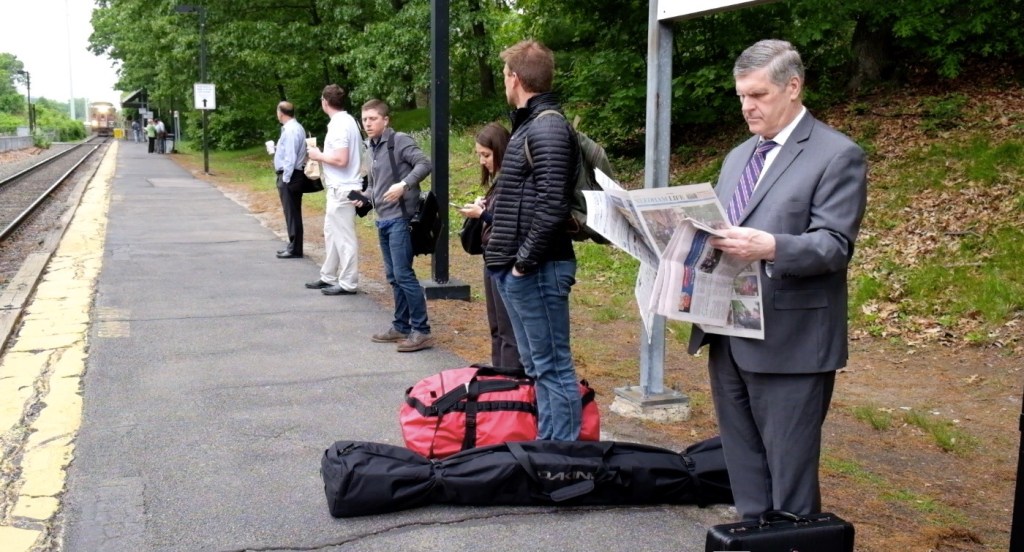
Mike Chambers waits for a train with other Boston commuters | Photo:Leila de Bruyne
With today’s weather-forecasting technology, the proliferation of climbing gyms and training facilities and the availability of last-minute flights, weekend warriors can tick off major accomplishments without even dipping into those precious PTO days. All it takes is the right attitude, some extra efficiency and a next-level obsession.
Here are five athletes who are redefining what’s possible to pull off next weekend—and what we can learn from their next-level exploits.
John Frieh, Portland, Oregon
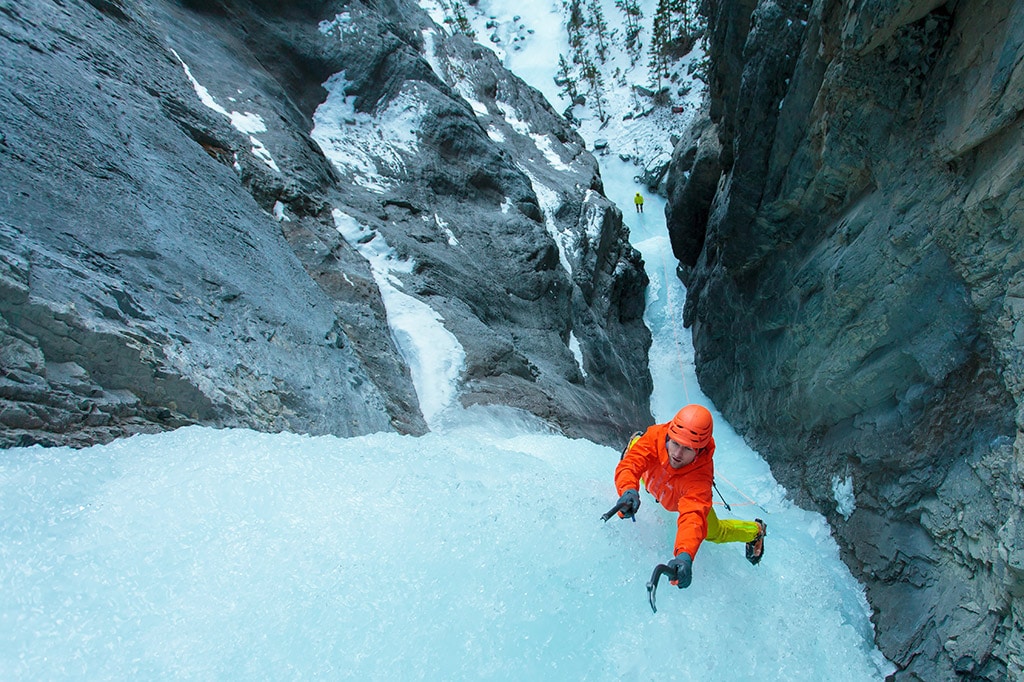
John Frieh climbs Beowulf in the Ghost River Valley, Canadian Rockies | Photo: Tim Banfield
When Frieh (38) was a factory manager at Intel from 2003-2013, he had three weeks vacation. He wanted to climb big objectives in Alaska, but when he read Joe Puryear’s book, Alaska Climbing, most of the big trips were two-week expeditions, some longer. This bummed Frieh out, and the book sat on a shelf for month–until he started watching weather windows closely, waiting for them to lineup with his weekends.
In 2009, Frieh and a friend hopped on a last-minute flight to Anchorage and put up the first ascent of the west ridge of Mt. Burkett over July 4th weekend. He did not use a single vacation day to do it. Since then, he’s taken almost 20 trips up to Alaska, averaging three days per trip, and about half of them have been first ascents on alpine and mixed ice routes.
To strengthen his climbing abilities, Frieh began hitting the gym and became a Gym Jones certified functional fitness coach. He now works as a personal trainer for private clients, professional athletes and even royal families in the Middle East.
Warrior Wisdom
Frieh lives close to a major airport which allows him to jump on a last-minute flight when a viable weather window appears on his iPhone’s weather app. But first, he’ll check the National Weather Service, as well as local webcams to get a sense of whether or not he should start packing. He also has a good relationship with his favorite bush plane and helicopter pilots in Alaska. He can call them to check conditions and flight availability before leaving on a Friday after work, get to Anchorage and hit the 24-hour grocery store, and drive up to the Alaska Range in the middle of the night to be climbing by Saturday morning.
But physical preparation is key to be able to pull this off. “The gym is this amazing place where you can rewrite your self-image and gain new insights into who you are and what you’re capable of,” he says. “When you can apply that to your life and aspire to do things you aren’t able to do today, that’s where you see these amazing things happen.”
Morals: If you can, live near an airport; train hard to maximize your microadventures.
Stevie Kremer, Crested Butte, Colorado
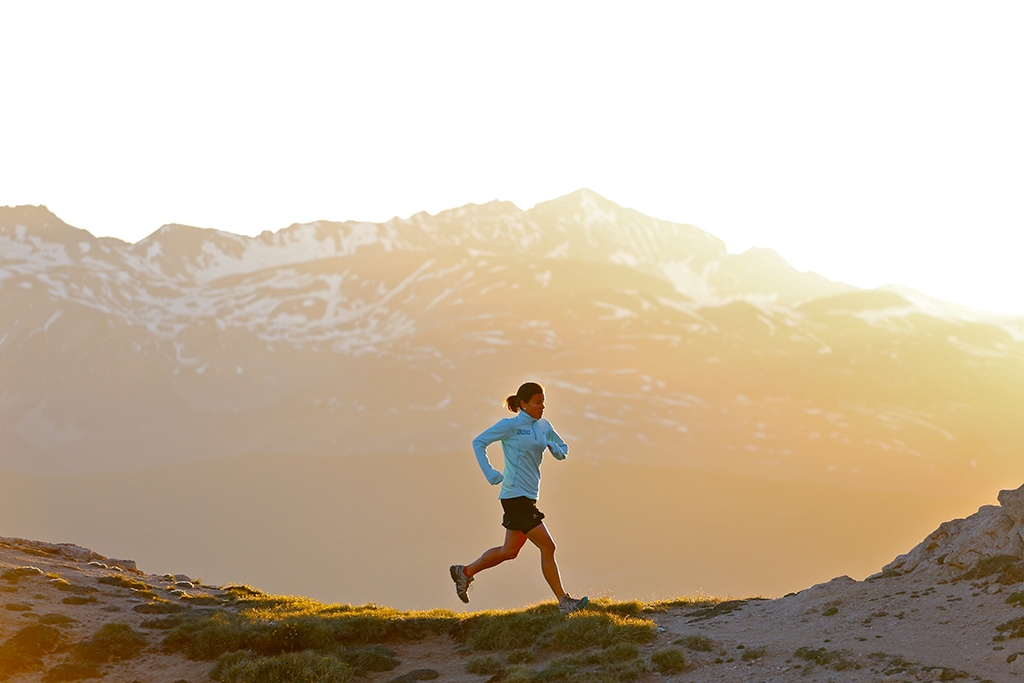
Stevie Kremer chasing the sunrise on Crested Butte Mountain Resort | Photo: Chris Segal
Ever wonder what your second grade teacher did on the weekends? It most likely paled in comparison to what Kremer (34) is up to. Most recently, she was training to win a marathon on every continent. Yes, that’s right–not just complete, but win. A full-time teacher for nine years and now the executive director of a nonprofit, Kremer was the Long Distance Mountain World Champion in 2012, Skyrunner World Series champion in 2013 and 2014, and won three major mountain running races in 2016 while setting multiple course records.
Aside from a day of travel here and there, Kremer rarely skipped school to get to her races and loves coming home to her Crested Butte community. “If I do have a bad race,” she says (very hypothetically), “I come back to friends and a rewarding job instead of just the disappointment of a poor performance.” Kremer typically wakes up around 4:30 a.m., goes for a run, then to work, then another run after work, and is usually in bed by 9 p.m. every night, but she tries to never say no to an invitation to dinner with friends.
Warrior Wisdom
“I like balancing the reality of a career and my athletic goals,” she says. “I work hard to achieve my running goals, but I still put running second to my life with friends and family, which is what life’s really all about. Also, learning to sleep on airplanes helps a lot.” Melatonin and wine may have something to do with that last one, she laughs.
Morals: Find a balance that works for you; get good rest when you can.
Jason and Andy Dorais, Salt Lake City, UT
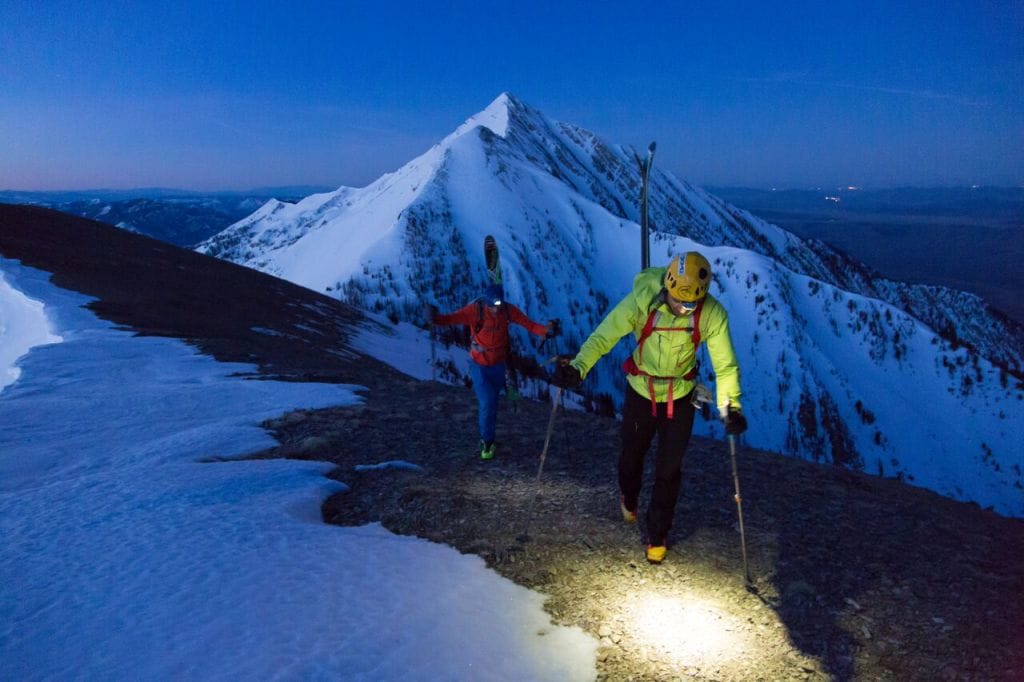
The Dorais Brothers getting an alpine start on Mt. Nebo in the Wasatch. | Photo: Courtesy
When you’re trying to squeeze big missions into daily life, speed helps, especially for brothers Jason and Andy Dorais (35 and 36, respectively), who regularly tick off Fastest Known Times (FKTs) in the Wasatch Mountains between their shifts as ER doctors at Intermountain Medical Center in Salt Lake City. The brothers have skied, run and biked up iconic peaks all over the American West in short time windows, including a 48-hour road trip from Salt Lake City to Washington’s Mt. Rainier in 2013, where their round trip summit and ski from the Paradise parking lot took a record-breaking 3:57:55.
In residency, they both worked 80-hour weeks with one or two days off each month. Now, their schedules are a bit more flexible, but they still have kids and family responsibilities to juggle while skiing 120+ days a year. This winter, they skied the Grand, Middle and South Tetons in a day, drove nearly five hours home to Salt Lake for a work obligation, then left at 4 a.m. the next day to go back to the Tetons and ski a line called Pura Vida, making it back home again that evening in time for dinner with their in-laws.
Warrior Wisdom
“We like to ski with people who are always fun and laughing, even when conditions suck and things are not that fun,” says Jason. “Enthusiasm makes all the difference in your motivation and can get you through anything”
“If I ride my bike for five hours before work, I’m going to function better,” says Andy. “I feel sharper and have better energy. On top of work, there are things we want to be home for. If we can pack in more between those responsibilities, I think life is more full.”
Morals: Find like-minded, motivating partners; sneak adventure in between core responsibilities.
Shanjean Lee, Portland, Oregon
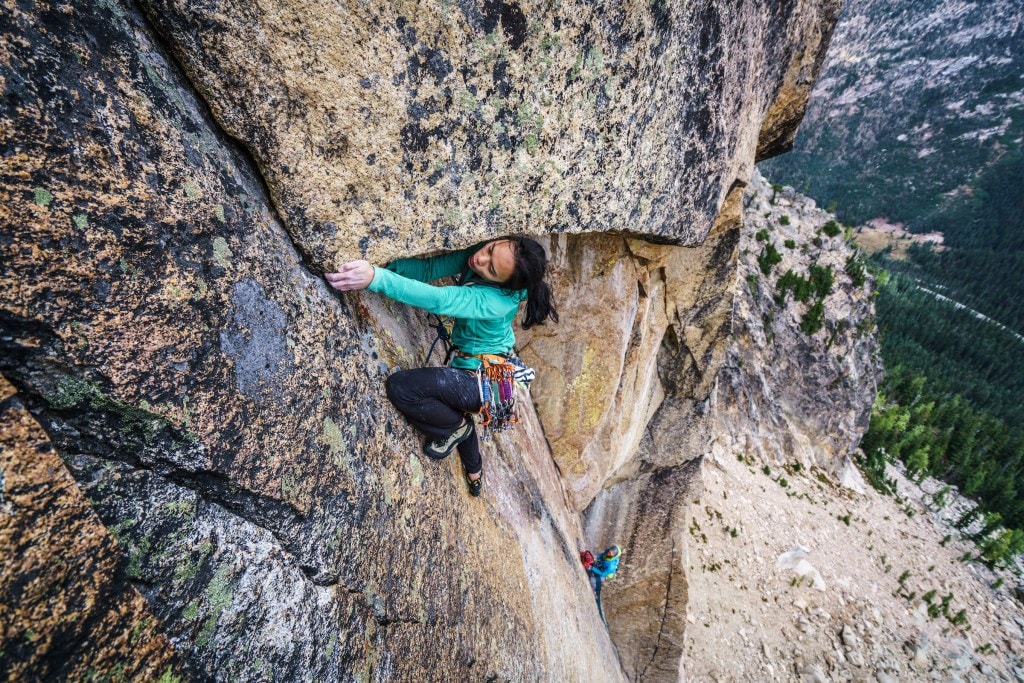
Shanjeen Lee leads The Thin Red Line (5.12) on Liberty Bell Mountain, Washington Pass, WA | Photo: Mikey Schaefer
Lee (32) grew up in Southern California, completely unaware that hiking and rock climbing even existed. She discovered both on a weeklong trip to Stoney Point, outside of Los Angeles, in 2003, and hasn’t stopped progressing since, even as she works her way through a residency in orthopedic surgery, putting in 60-80 hours a week.
She nabbed a first female ascent of The Thin Red Line (5.12) and is one of the only people to free climb Liberty Crack (it’s normally done on aid), all on Washington Pass . In Peru last August, she sent a 5.13, 20-plus-pitch route called El Cruz del Sur, topping out at 17,000 feet after coming from sea level a couple days before. To prepare, she and her boyfriend spent three weeks sleeping in an Hypoxico oxygen deprivation tent, which was a lot less time-consuming than, say, sleeping in the parking lot of Mt. Hood every night, which is not unheard of.
“I think residency makes you realize you can always do more than you think,” she says. “When you feel like you’re done, another patient comes in, so you have to keep going and realize it’s not so bad. The same goes for big missions in the mountains.”
Warrior Wisdom
“I don’t always have the luxury of an hour or three to go to the gym, or two months to go on an expedition,” she says. “I’ve realized you don’t really need a big chunk of time. Everybody has 20 minutes to squeeze in a whole fingerboard, core or squat workout or some interval runs. Everybody has a lunch break when they can do something to contribute to their training goals. Everybody also has limitations and constraints. Instead of comparing your limitations or progress to other people whose lives are different from yours, focus on your own challenges. I got the strongest and sent my hardest climb during the hardest part in my residency because I turned up my training discipline to match my work intensity.”
Morals: Take advantage of every unscheduled minute; climb your own climbs.
Jason Antin, Golden, Colorado

Jason Antin grabs an hour-long nap before climbing (and skiing) Mt. Rainier. | Photo: Mike Chambers
After college in New York, Antin (34) wanted to go into the Secret Service and pursue federal law enforcement. He worked for an investment firm in Boston, ice climbed on the weekends and never took a vacation day in three years. But things changed when his passion for the mountains brought him to Colorado, where he decided to stay. He started running marathons, guiding for Denver Mountain Guides, coaching at Boulder’s Alpine Training Center and eventually found a full-time role as director of strategic partnerships at experiential marketing company Gociety.
Along with his college buddy Mike Chambers, executive director of a nonprofit, and ensconced in the mountain west, Antin started a project called Beat Monday, in which both men leave their desk jobs no earlier than 5 p.m. on a Friday, fly to a destination for a big adventure, and make it back to their office no later than 9 a.m. on Monday. So far, they’ve climbed the Yosemite big wall Leaning Tower in a weekend with a snowstorm on the summit; biked from the Gulf of Mexico to high camp of 18,491-foot Pico de Orizaba, then summited; and climbed and skied Mt. Rainier by the Emmons Glacier from White River Trailhead, all without missing their Monday morning meetings. Future missions include the Running of the Bulls in Pamplona and surfing giant waves in Oregon.
Warrior Wisdom
“Alpine starts teach you that you can do a whole lot on very little sleep. You’re still going to make it through,” Antin says. “Find other people equally excited to get out and do these adventures with you. Also, working after hours isn’t a bad thing if it allows you to go on a big trail run during the day. And you’ve gotta think beyond the 9-5 mentality, even if that’s your structure. Often the best time to do this stuff is before the sun comes up and after it goes down. You have your 9-5 life, but you have your 5-9 life, too.”
Morals: Make the most of flexible hours; Sleep when you’re dead.
